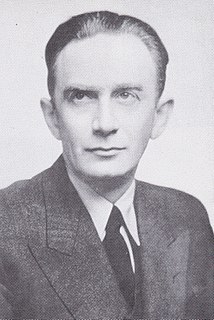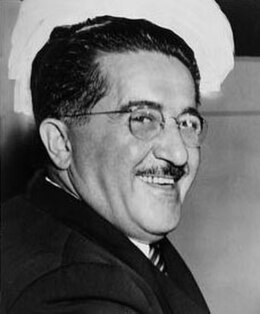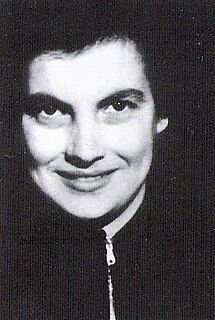Related Research Articles

Walter Germanovich Krivitsky was a Soviet intelligence officer who revealed plans of signing the Molotov–Ribbentrop Pact after he defected to the West.
Alexander Grigoryevich Barmin, most commonly Alexander Barmine, was an officer in the Soviet Army and diplomat who fled the purges of the Joseph Stalin era for France and then United States, where he served the US government and also testified before congressional committees.
Harold Glasser was an economist in the United States Department of the Treasury and spokesman on the affairs of the United Nations Relief and Rehabilitation Administration (UNRRA) 'throughout its whole life' and he had a 'predominant voice' in determining which countries should receive aid. Glasser was a member of the Perlo group of Soviet spies during World War II and worked closely with Harry Dexter White. His code name in Soviet intelligence and in the Venona files is "Ruble".
Charles Kramer, originally Charles Krevisky was a 20th-Century American economist who worked for U.S. President Franklin D. Roosevelt as part of his brain trust. Among other contributions, he wrote the original idea for the Point Four Program. He also worked for several congressional committees and hired Lyndon B. Johnson for his first Federal job. Kramer was alleged a Soviet spy as member of the Ware Group, but no charges were brought against him.
As early as the 1920s, the Soviet Union, through its GRU, OGPU, NKVD, and KGB intelligence agencies, used Russian and foreign-born nationals, as well as Communists of American origin to perform espionage activities in the United States, forming various spy rings. Particularly during the 1940s, some of these espionage networks had contact with various U.S. government agencies. These Soviet espionage networks illegally transmitted confidential information to Moscow, such as information on the development of the atomic bomb. Soviet spies also participated in propaganda and disinformation operations, known as active measures, and attempted to sabotage diplomatic relationships between the U.S. and its allies.
Hede Tune Massing, née "Hedwig Tune", was an Austrian actress in Vienna and Berlin, communist, and Soviet intelligence operative in Europe and the United States during the 1930s and 1940s. After World War II, she defected from the Soviet underground. She came to prominence by testifying in the second case of Alger Hiss in 1949; later, she published accounts about the underground.

J. Peters was the most commonly known pseudonym of a man who last went by the name "Alexander Stevens" in 1949. Peters was a journalist and political activist who was a leading figure of the Hungarian language section of the Communist Party USA in the 1920s and 1930s. From the early 1930s, Peters was actively involved in the espionage activities of the Soviet Union in the United States, fabricating passports, recruiting agents, and accumulating and passing along confidential and secret information.
Julian Wadleigh (1904–1994) was an American economist and a Department of State official in the 1930s and 1940s. He was a key witness in the Alger Hiss trials.
Franklin Vincent Reno was a mathematician and civilian employee at the United States Army Aberdeen Proving Ground in Maryland in the 1930s. Reno was a member of the "Karl group" of Soviet spies which was being handled by Whittaker Chambers until 1938. Reno confessed in late 1948 to his espionage activities on behalf of the GRU. He is listed as number "118th" in the Gorsky Memo.
Arvid Jacobson was a Finnish-American Communist who spied for the Soviet Union in the 1930s.
Richard Edward Lauterbach was the Time magazine Moscow bureau chief during World War II.
Manfred (Moses) Stern (1896–1954) was a member of the GRU, Soviet military intelligence. He served as a spy in the United States, as a military advisor in China, and gained fame under his nom de guerre as General Kléber, leader of the International Brigade during the Spanish Civil War.

Alexander Ulanovsky (1891–1970) was the chief illegal "rezident" for Soviet Military Intelligence (GRU), who was rezident in the United States 1931–1932 with his wife and was imprisoned in the 1950s with his family in the Soviet gulag.
Valentin Markin was the chief illegal rezident and director of the espionage operations of the Soviet Union in the United States from 1933 to 1934. Markin headed the activities of both Soviet military intelligence and that of the Soviet secret police during this period.
The OMS, also known in English as the International Liaison Department (1921-1939), was "the most secret department" of the Executive Committee of the Communist International. It has also been translated as the Illegal Liaison Section and Foreign Liaison Department.
William Ward Pigman was a chairman of the Department of Biochemistry at New York Medical College, and a suspected Soviet Union spy as part of the "Karl group" for Soviet Military Intelligence (GRU).
Arthur Aleksandrovich Adams, was a Soviet spy, and Hero of the Russian Federation, who passed critical information to the Soviet Union about the American Manhattan Project.

Main Intelligence Directorate, abbreviated GRU, was the foreign military intelligence agency of the Soviet Army General Staff of the Soviet Union until 1991. For a few months it was also the foreign military intelligence agency of the newly established Russian Federation until 7 May 1992 when it was dissolved and the Russian GRU took over its activities.

Maya Aleksandrovna Ulanovskaya, was an American-born Russian-Israeli who, with spouse Anatoly Yakobson, participated in the dissident movement in the USSR and became a professor, writer, and translator in Israel.
References
- ↑ Chambers, Whittaker (1952). Witness . Random House. pp. 405–449 ("Colonel Boris Bykov") et al. ISBN 0-89526-571-0.